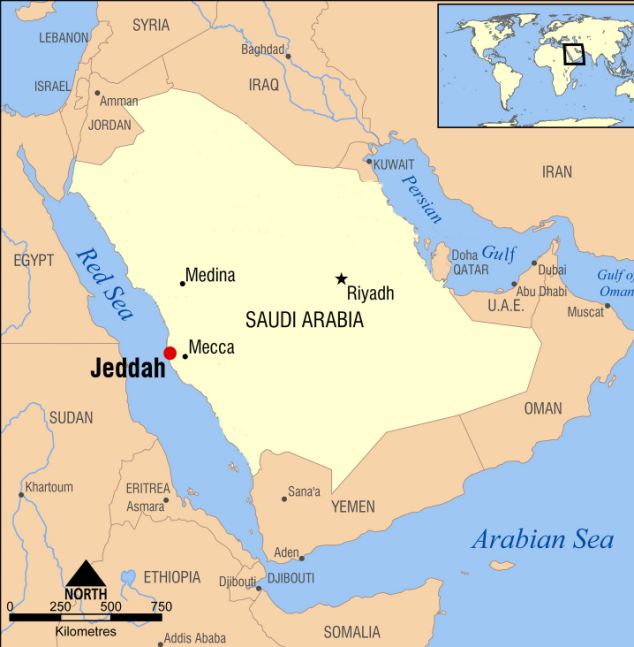Chinese geologists have been assisting Saudi Arabia in mapping it reserves of uranium ore as part of their nuclear cooperation agreement. They have worked through the year even in the sweltering heat of summer to rapidly map the ore deposits. They found that over ninety thousand tons of uranium could be produced from three main deposits in the center and northwest of the country.
Saudi Arabia has been transparent about its plans to convert to nuclear power generation based on fuel that it intends to mine and process internally. They say that they want to use uranium to diversify their energy mix but uranium enrichment also opens up the possibility of using uranium to create nuclear weapons. They may have enough minable uranium ore to make nuclear fuel for a number of reactors and nuclear weapons. This revelation will increase international concerns about Saudi Arabia’s potential nuclear armament.
Mark Hibbs is a senior fellow in the nuclear policy program at the Carnegie Endowment for Peace. He said, “If you are considering nuclear weapons development, the more indigenous your nuclear program is, the better. In some cases, foreign suppliers of uranium will require peaceful-use commitments from end users, so if your uranium is indigenous, you don't have to be concerned about that constraint.”
The report from the Beijing Research Institute of Uranium Geology (BRIUG) and China National Nuclear Corporation (CNNC), working with the Saudi Geological Survey has not been independently verified.
The issue with uranium enrichment has been a problem for the U.S. with respect to supplying nuclear technology to Saudi Arabia. This is especially true after Crown Prince Mohammed bin Salman said that his kingdom would certainly develop nuclear weapons if Iran did.
Saudi Arabia has supported President Trump’s “maximum pressure” campaign against Iran after he pulled the U.S. out of a 2015 nuclear pact intended to curb Iran’s disputed nuclear program in return for relief from international sanctions. The main international concern is the lack of transparency on nuclear research in Iran. They have been avoiding inspections due to a 2005 agreement with the International Atomic Energy Agency (IAEA).
A small quantities protocol means that monitoring is not necessary up to the point that fissile fuel is put into a reactor. But the IAEA now wants Iran to accept a full monitoring program which has not been allowed so far. Rafael Grossi is the head of the IAEA. He said, “We are in conversation with them. They are interested in developing nuclear energy, for peaceful purposes of course.”
Most of the Saudi uranium reserves appear to be close to a site chosen for the planned city of Neom which is the centerpiece of bin Salman’s Vision 2030 project to reduce the kingdom’s dependency on oil. China has been prospecting since 2017 across nine potential sites. China wants to strengthen diplomatic and economic ties with Saudi Arabia as part of its Belt and Road initiative to spread Chinese aid and trade from its border all the way to West Africa.
